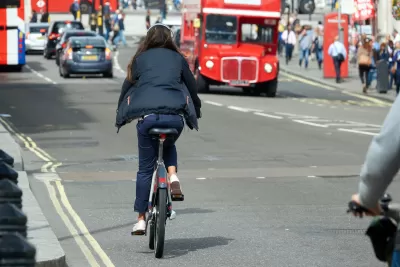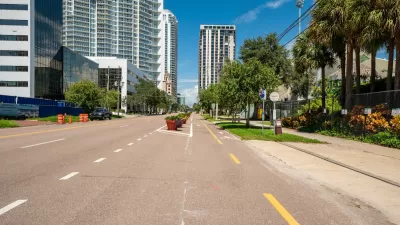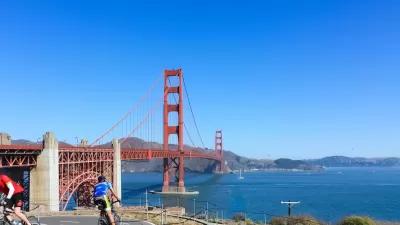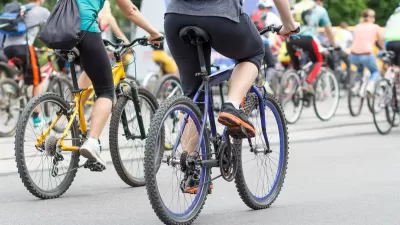Bike infrastructure isn’t just about bike lanes: safe, supportive spaces where adults can learn to ride and repair bikes are a key component.

Safe, protected bike lanes and connectivity to transit are important factors in supporting more cycling. But, Alison Griswold writes in Bloomberg CityLab, “The social infrastructure of urban cycling — programs that give people the skills, tools and confidence to get on two wheels — can be just as important as physical infrastructure, especially when it comes to bridging access gaps.”
Around the world, rates of cycling for women are significantly lower than for men, due to a host of factors from harassment to to infrastructure. “For many decades, the streets of cities around the world have largely been built around the mobility preferences of men.”
Social and educational programs that help people learn to ride and feel confident on bikes can help close the gap. “In the UK, Transport for London reported last June that uptake of adult cycle training sessions was ‘particularly strong among some traditionally under-represented cycling groups,’ with 76% female participants and more than 40% from Black, Asian, and other ethnic minority backgrounds.” Griswold provides examples of other education programs, but notes that few adult bike education programs exist in comparison with programs aimed at children. The popularity of biking helps, too: “A 2021 survey of cycling behavior in 17 countries and 35 major cities found women biked as much as men when cycling’s overall mode share exceeded 7%.” Sadly, only a few global cities meet that threshold.
FULL STORY: The Other Kind of Bike Infrastructure Cities Need

Study: Maui’s Plan to Convert Vacation Rentals to Long-Term Housing Could Cause Nearly $1 Billion Economic Loss
The plan would reduce visitor accommodation by 25,% resulting in 1,900 jobs lost.

North Texas Transit Leaders Tout Benefits of TOD for Growing Region
At a summit focused on transit-oriented development, policymakers discussed how North Texas’ expanded light rail system can serve as a tool for economic growth.

Why Should We Subsidize Public Transportation?
Many public transit agencies face financial stress due to rising costs, declining fare revenue, and declining subsidies. Transit advocates must provide a strong business case for increasing public transit funding.

How to Make US Trains Faster
Changes to boarding platforms and a switch to electric trains could improve U.S. passenger rail service without the added cost of high-speed rail.

Columbia’s Revitalized ‘Loop’ Is a Hub for Local Entrepreneurs
A focus on small businesses is helping a commercial corridor in Columbia, Missouri thrive.

Invasive Insect Threatens Minnesota’s Ash Forests
The Emerald Ash Borer is a rapidly spreading invasive pest threatening Minnesota’s ash trees, and homeowners are encouraged to plant diverse replacement species, avoid moving ash firewood, and monitor for signs of infestation.
Urban Design for Planners 1: Software Tools
This six-course series explores essential urban design concepts using open source software and equips planners with the tools they need to participate fully in the urban design process.
Planning for Universal Design
Learn the tools for implementing Universal Design in planning regulations.
Ascent Environmental
Borough of Carlisle
Institute for Housing and Urban Development Studies (IHS)
City of Grandview
Harvard GSD Executive Education
Toledo-Lucas County Plan Commissions
Salt Lake City
NYU Wagner Graduate School of Public Service





























